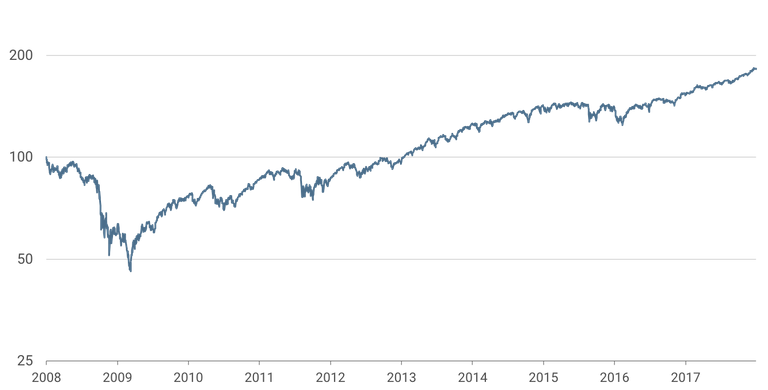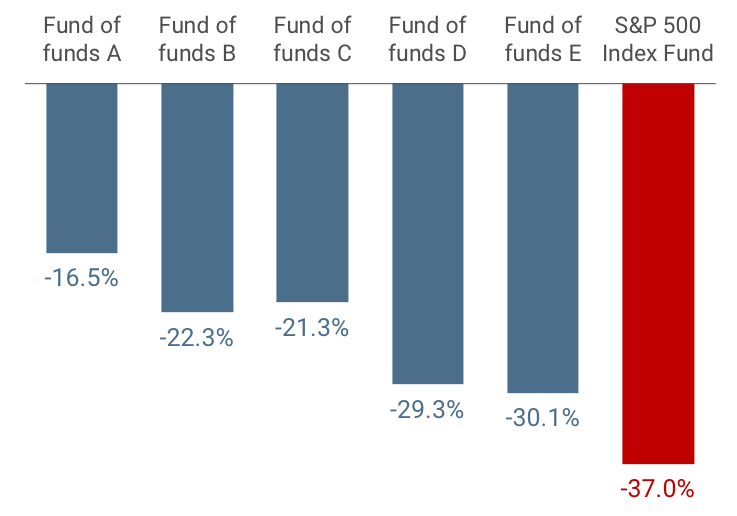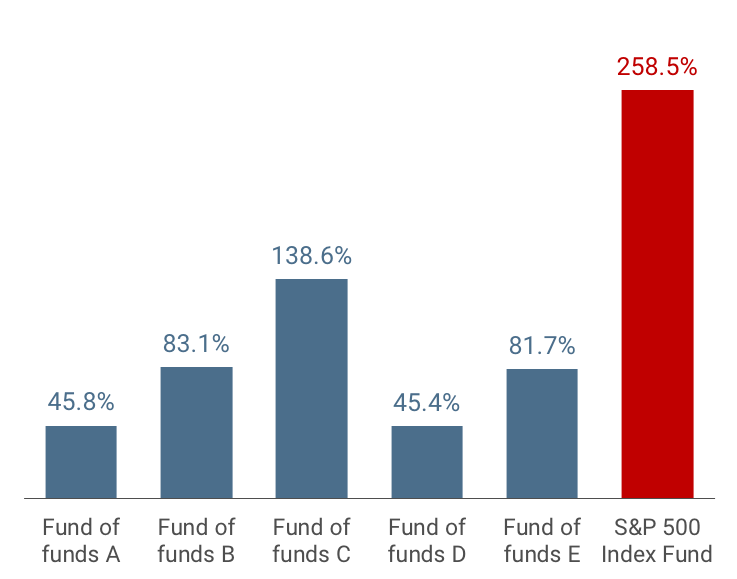Can active trading deliver higher returns than passive HODLing? Buffett’s bet with hedge funds provides great lessons from the traditional stock markets.

In the past months, I had a bunch of discussions with crypto investors, and it turns out that many believe they can achieve higher returns with active trading than with passive investing. Trading is also much more exciting and fun, while passive investing is boring. But how hard it really is to outperform the market?
The bet
In 2006, Warren Buffet — a legendary investor and one of the wealthiest people in the world, worth $88 billion — challenged the hedge fund industry. He publicly stated that over a period of ten years, an S&P Index Fund would outperform a collection of hedge funds and that he was willing to bet $500,000 on it. An index fund mirrors the performance of the market and usually charges only a small annual fee. Hedge funds, on the other hand, are the epitome of active trading. Their objective is to provide stable returns and outperform the market by utilizing various trading strategies. They usually charge very high fees for their wizardry: the standard is “2 and 20”, meaning 2% management fee and 20% performance fee (i.e., they take 20% of realized profits).
For a long time, Buffet’s challenge had received no reply, but in late 2007, Ted Seides of Protégé Partners accepted the bet. He created a diversified basket of hedge funds (in the fund of funds structures) with five different strategies (quant trading, long-short, macro, etc.). He was confident that they would easily outperform the S&P 500. Buffett and Seides each put $500,000 on the table and Buffett placed the bet on Long Bets stating:
“Over a ten-year period commencing on January 1, 2008, and ending on December 31, 2017, the S&P 500 will outperform a portfolio of funds of hedge funds, when performance is measured on a basis net of fees, costs, and expenses.”
Let’s first take a look at the S&P 500 performance in the given period:

In 2008, the S&P 500 recorded the worst annual return after the Great Depression, with a loss of 34%. In 2009, the bear market continued and the index lost 54% by 3 March 2009. This was followed by a sharp reversal and recovery in the subsequent years.
The results
As mentioned before, Ted Seides created five different hedge fund structures (A, B, C, D, and E). So, how did the hedge funds perform in this ten-year period compared to the S&P 500 Index Fund? Let’s first compare their performances in 2008:

In 2008, all hedge fund strategies outperformed the Index Fund, which makes sense: the Index Fund performance was in line with the S&P 500, while the hedge fund managers were actively trading their positions. The hedge funds can also short the market, and one of their strongest selling points is that they can generate positive returns even in bear markets. Interestingly though, none of them was able to achieve this, despite having ample shorting opportunities throughout the year.
In 2009, the recovery started and the market generated positive returns in all subsequent years. Here is the performance from 2009 to 2017:

The S&P 500 Index Fund strongly outperformed all hedge funds. What happened? While the Index Fund was passively holding its positions, the hedge fund managers tried to seize the opportunities of the market swings. They were going in and out of their positions, realizing the target prices of trades, locking the profits, using leverage, etc. and by doing so, they made many mistakes. In the end, they all strongly underperformed the market.
Here is the total ten-year period result:

Key facts:
The S&P 500 Index Fund generated 3.47x higher return than the top hedge funds
60% of all gains achieved by the hedge funds were deducted for the fees.
The hedge funds underperformed the S&P 500 Index Fund even on a gross level (before the fees).
The top hedge funds in the world with the brightest minds in finance, along with hundreds of analysts and traders, couldn’t outperform the market. Do you still think that you can do it?
Read the facts above again and contemplate on it.
The lessons
It is extremely tough to outperform the market. You may have a fairly decent chance to outperform it during the bear market, but during the bull run, you will miss on lots of gains by continually going in and out of your positions.
High trading activity diminishes returns. The main reason is obviously the trading fees. Each time you make a trade, you pay trading fees and this has an additional negative impact on your portfolio. In addition to this, the more you trade, the more mistakes you can (and will) make.
Passive investing is the best choice for the vast majority of investors. By being a passive investor, you will outperform 99.99% of other market participants, including the brightest minds at the world’s top hedge funds.
Final thoughts
When the next crypto bull run starts, it would make sense to re-evaluate your existing investment strategy. Does it still make sense during the bull market? If you still choose to continue with active trading, reread this article. If you still want to trade, at least make sure to record all your trades and compare your performance to the market. Many traders brag about profitable trades and big returns during the bull run but nobody compares their performance to the market. If they would, the vast majority would find out that they strongly underperformed it.
If you find value in this article, please share it with others. Feel free to also follow me on other social media platforms where I post interesting content regularly.
Follow me:
Steemit: https://steemit.com/@gregzupanc
Twitter: https://twitter.com/
LinkedIn: https://www.linkedin.com/in/gregzupanc/
Facebook: https://www.facebook.com/gregzup/
Instagram: https://www.instagram.com/gregzupanc/
Medium: https://blog.solidum.capital/@gregzupanc
DISCLAIMER:This article is for informational and discussion purposes only and does not constitute a marketing message, an investment survey, an investment recommendation, or investment advice. The article was prepared exclusively for a better understanding of market dynamics.